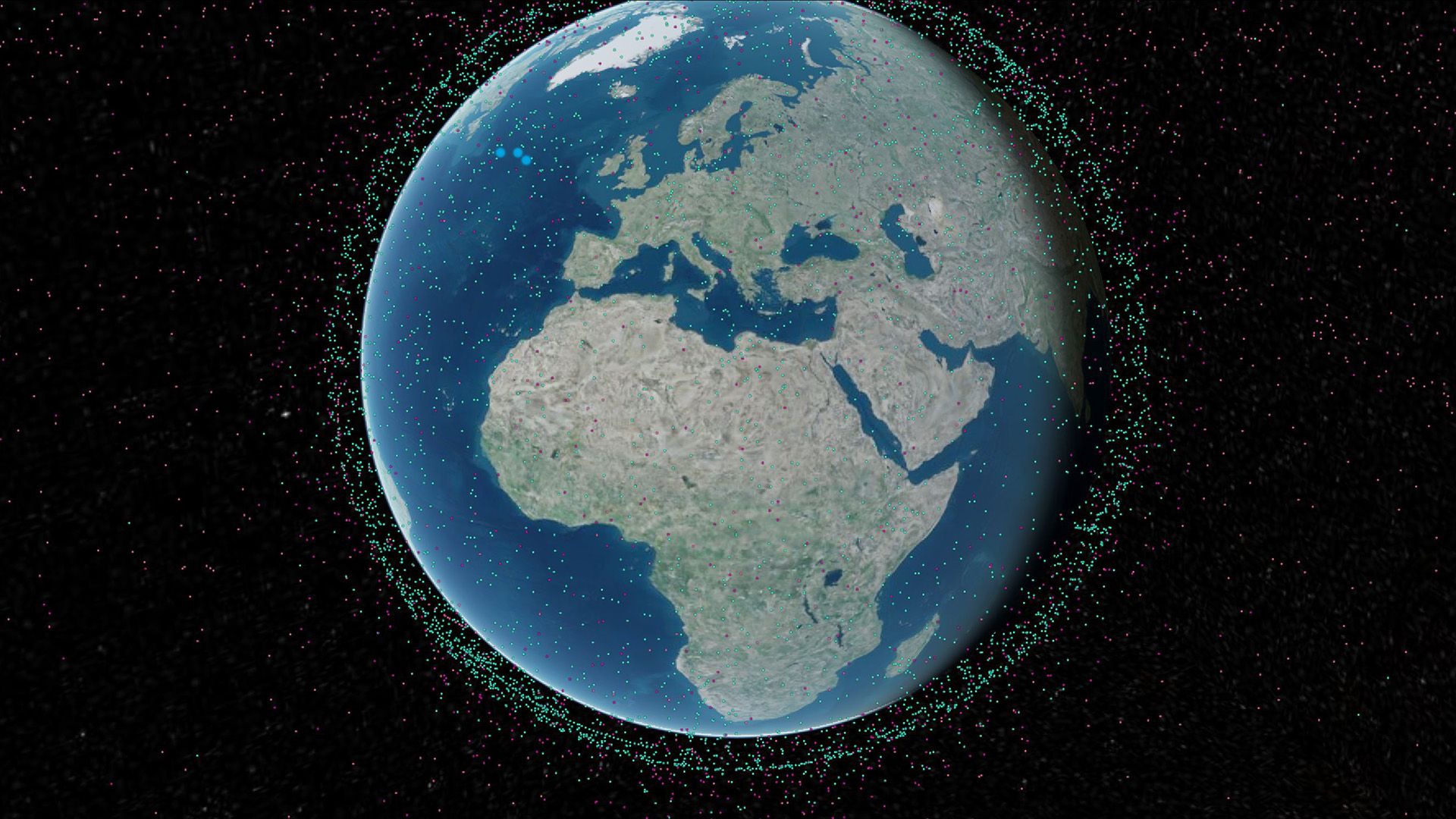
AI, satellites, and robots navigate towards space sustainability
By ITU News
As humanity continues to push the boundaries of our understanding of both space and artificial intelligence, satellites and robots are emerging as indispensable allies.
At the recent AI for Good Global Summit hosted by the International Telecommunication Union (ITU), three thought leaders shared insights on how AI and robotics are contributing to space sustainability: humanity’s capacity to use outer space peacefully over the long term for the socioeconomic benefit of all.
By way of the international treaty known as the Radio Regulations, ITU oversees the regulation of radio spectrum, whether it is used on Earth or in space. Last year’s Plenipotentiary Conference saw ITU’s highest decision-making body pass two resolutions on ITU’s role in implementing the Space2030 Agenda and the sustainability of the radio-frequency spectrum and associated satellite-orbit resources used by space services.
These “space highways” are getting congested, explained Moriba Jah, Founder and Chief Scientist at Privateer, displaying an AI-powered image of Earth’s orbit swarming with about 50,000 objects. While about 4,000 are operational satellites, Jah said, “the rest is garbage.”
He warned that our space environment is on its way to resembling a scene from the 2008 movie WALL-E showing Earth blanketed by an ocean of orbital junk.
To address this issue, Privateer developed a tool that tracks the real-time movement of satellites (and other objects) in orbit around the Earth. Sitting on top of the Wayfinder platform, their tool can track and assess a satellite’s movement in real-time – even using AI to predict potential orbital collisions, which pose a serious (and expensive) risk to satellites.
Despite the lack of traffic management rules for space, Jah believes embracing collaboration and leveraging data-driven technologies will create a safer, cleaner and more sustainable space environment. This can help protect not only the satellites themselves, but also essential services that rely on them, such as GPS, ATMs, and terrestrial communications.
A participation revolution
Taking the audience from Earth’s orbit to its surface, Andrew Zolli, Chief Impact Officer at Planet, delved into the intersection of AI, satellite imagery, and planetary transitions.
His company uses AI to classify and extract data from high-resolution satellite imagery, enabling scientists to map Earthly assets like water, biodiversity, and forest cover, for example – “eventually enabling us to track progress on the UN Sustainable Development Goals in real time.”
Among the many use cases for Planet’s satellite imagery and AI-driven analytics is monitoring food security in Ukraine. By observing every field in the country on a weekly basis, Planet data is helping research organizations like NASA Harvest understand how ongoing conflict is affecting one of the world’s major breadbaskets – and the global food system.
The powerful combination of AI and satellite imagery is also moving the needle on SDG 7 – Affordable and Clean Energy – by tracking renewable energy sources through Global Renewables Watch, a collaboration between Planet, The Nature Conservancy, and Microsoft.
Zolli envisions an age of radical climate transparency, driven by AI and geospatial data combined with the power of generative large language models (LLMs) which could empower millions of people to participate directly in achieving the 2030 Agenda.
20 minutes to Mars
The session headed from the Blue Planet to the Red Planet when Vandi Verma, Deputy Manager for Mobility and Robotics Systems at NASA’s Jet Propulsion Laboratory shared groundbreaking advancements in robotics for space exploration.
Focusing on the Perseverance Rover and Ingenuity helicopter, Verma explained how these robots have made major strides in autonomous navigation, sample collection, and aerial mobility on Mars.
Verma highlighted the mission-critical importance overcoming time delays and latency issues in facilitating communication between Earth and Mars, explaining how a radio signal transmission can take up to 20 minutes.
Perseverance’s ability to navigate Mars autonomously, overcoming challenges from rocky terrain to crater cliffs, showcases how far space robotics have come since Viking 1 first landed on the Martian surface in 1975.
One of the more ambitious endeavors, Verma explained, is the 2030 plan to send samples from Mars to Earth, which will require the collaboration of NASA, ESA, and private sector partners to develop and deploy advanced robotic systems capable of safely returning Martian samples for further analysis.
While their areas of focus differ greatly, all three space thought leaders had a similar message for researchers, policymakers, and technology enthusiasts alike.
Harnessing the power of AI and robotics collaboratively can help humanity navigate the final frontier and tackle the pressing challenges of space sustainability.
The upcoming World Radiocommunication Conference (WRC) presents another timely opportunity for the global community to address pressing concerns related to space communications as they gather to review and update the Radio Regulations.
As humanity ventures further into the final frontier, AI and robotics will undoubtedly play a key role in shaping a cleaner and more connected universe.
Image credit/Wayfinder platform
